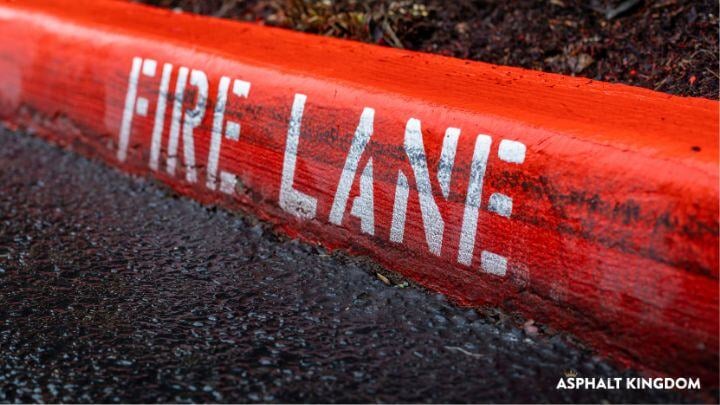Reflective glass beads for paint are an essential part of the line striping process. Yet many people are unaware of these beads. Without them, headlights would not pick up painted lines and curbs. Asphalt sealcoating companies need to understand the proper application of these beads.
Reflective Glass Beads and Line Painting
Line striping paint is not very reflective on its own. That poses an issue when cars are driving at night. Reflective glass beads for paint are the solution since these beads reflect light back towards the source. This principle is retro-reflectivity.
In line paint, retro-reflectivity occurs when the car headlights hit the reflective glass beads in the paint. The light bounces back towards the car and driver. This allows people to park correctly in the dark, stay in their lane while driving, and more.
The Right Reflective Glass Beads for Paint
Reflective glass beads for paint come in a variety of sizes. Supply companies express these sizes in micrometers or sieve mesh sizes. Often, local companies make the final decisions regarding the bead size mix based on local conditions.
Apart from size, the other important factor is the refractive index (RI). In reflective glass beads, the higher the RI, the more reflective the bead is. Most state and local agencies likely use 1.5 RI beads, though some places may use more reflective beads.
Generally, less reflective beads are more inexpensive. This is because the bead standards allow more impurities and are easier to manufacture. That is why many locations use lower RI beads even though more reflectivity generates significantly more light.
Unfortunately, unethical business owners may see this vital piece as a place to skimp and choose a lower RI bead. This decreases the quality of those finishes and their durability. This is another way asphalt sealcoating and line painting industries have obtained a bad reputation.
Applying the Beads
Regardless of the method, line paint must be wet when applying the reflective glass beads for paint. Otherwise, the beads will not stick. Additionally, the application requires timing so that the beads only sink in about 50%. Otherwise, they lose the reflective quality that they’re meant to provide.
It’s also crucial that the reflective glass beads are not mixed with the paint. The beads must sit on top of the paint to catch the light. Mixing them in may seem easier, but only a few of the beads will be able to reflect light back. This defeats the purpose of installing reflective beads for line paint.
The easiest way to add reflective glass beads for line paint is with a machine. Most line painters offer automatic reflective bead application. This feature automatically distributes the beads as well, which is a uniform benefit.
The other option is a manual application. For this, companies use a container with holes. Then the worker simply shakes the beads onto each line. This method requires more consideration and attention to local conditions for a high-quality finish.





